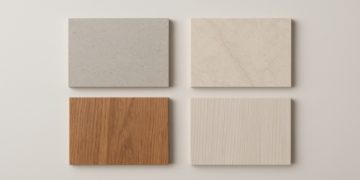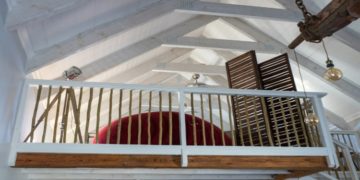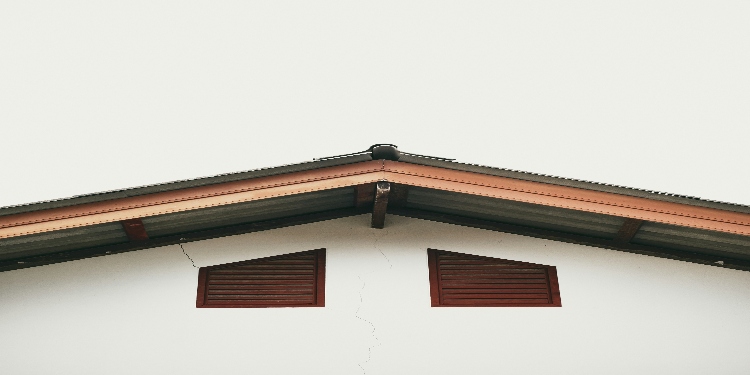Choosing a new roof isn’t just about appearance—it’s about performance, lifespan, cost, and climate compatibility. Whether you’re planning roof replacements or evaluating options for new construction, understanding the pros and cons of each material is essential.
Roofing materials come in a variety of styles, each suited to different needs, budgets, and environmental conditions. While asphalt shingles dominate residential roofing in many areas, alternative materials like metal, clay, or synthetic tiles are becoming more common. Your final decision should take into account everything from curb appeal and energy efficiency to weather resilience and required maintenance.
The Big Three: Material Choices That Matter
When it comes to roof replacements, most homeowners encounter three common material types: asphalt shingles, metal panels, and clay or concrete tiles. Each brings a unique combination of durability, cost, and aesthetic.
Asphalt Shingles
Asphalt shingles are the most commonly used roofing material in the U.S., and for good reason. They’re affordable, widely available, and come in various colors and textures. Modern versions include architectural shingles, which offer a layered appearance and increased durability.
They perform well in moderate climates but may wear down more quickly in areas with heavy sun exposure or extreme temperature swings. On average, they last between 15–30 years depending on quality and installation.
For homeowners looking to replace a roof without breaking the bank, asphalt remains a popular and practical choice.
Metal Roofing
Metal roofing—often made of steel, aluminum, or copper—offers a sleek, modern look with exceptional longevity. These roofs can last 40–70 years and are especially effective in areas prone to heavy rain, snow, or wild temperature swings.
They reflect sunlight, reducing cooling costs in the summer, and are non-combustible, which provides peace of mind in wildfire-prone regions.
However, metal roofing is more expensive upfront and can be noisy during heavy rain unless insulated properly. Still, the reduced maintenance and extended lifespan make it an attractive long-term investment.
Clay and Concrete Tiles
Clay and concrete tiles are prized for their aesthetic and resistance to heat, particularly in southwestern or coastal regions. These materials are heavy and require reinforced roof framing, but they can last more than 50 years when maintained correctly.
They’re also resistant to insects, rot, and fire, but their weight and fragility during installation (or walking on them) must be considered. Additionally, replacement can be expensive if broken tiles need matching.
If longevity and traditional charm matter more than upfront cost, tile roofing is hard to beat.
Factors to Consider Beyond Aesthetics
While appearance plays a major role in roofing decisions, several functional considerations carry equal weight.
Local Climate
The material that works best in Florida’s humidity may underperform in Michigan’s snow. Always choose roofing that aligns with your region’s typical weather. For example, metal roofs handle snow loads well, while clay tiles offer superior heat resistance.
Weight and Structural Requirements
Some materials—such as concrete tiles—require structural reinforcements. Before choosing a heavier roofing system, consult with a professional to ensure your home’s frame can support the added weight.
Longevity vs. Upfront Cost
There’s often a trade-off between initial price and long-term durability. While asphalt shingles cost less to install, they may need replacing sooner. Conversely, metal or tile roofing can last several decades but come at a premium.
Homeowners considering long-term investment and resale value may find that higher-cost materials offer better returns over time.
Maintenance Demands
Different roofing systems carry unique upkeep requirements. Metal roofs generally need less attention, while asphalt shingles can deteriorate faster without periodic inspection. Tiles are durable but prone to cracking and require occasional replacement.
Low-maintenance options are appealing, especially for those who don’t want to commit to regular hands-on upkeep.
The Overlooked Element: Gutters
Roof replacements often focus solely on what’s above the rafters. But gutter replacements are equally important when it comes to managing water flow and protecting your home.
Even the best roofing material will fail prematurely if water is not properly channeled away. Gutters that are outdated, poorly installed, or clogged can cause leaks, rot, or foundation problems.
When evaluating roof materials, think about compatibility with your existing or planned gutter system. Metal roofs, for instance, may shed water more quickly and require deeper gutters or wider downspouts to prevent overflow.
Professionals like Class Roofing often advise evaluating gutters as part of a full-system upgrade to ensure longevity and performance.
Popular Trends in Roofing Today
In recent years, roofing trends have begun emphasizing sustainability, energy savings, and visual variety. Solar-ready roofing materials, cool roof coatings, and recycled materials are becoming more accessible.
Color is also playing a bigger role in roofing decisions. Homeowners now explore more expressive palettes beyond traditional grays and blacks—think deep greens, terra cotta reds, or soft taupes. These hues not only add curb appeal but can also influence a home’s energy efficiency by reflecting more heat or light.
Synthetic materials that mimic slate, wood, or tile are growing in popularity as well. They offer the look of traditional styles with reduced weight and improved weather resistance.
Warning Signs It’s Time to Replace
Regardless of your current roof’s material, there are some common indicators that replacement may be needed:
- Cracked, curling, or missing shingles
- Sagging areas or visible dips in the roofline
- Signs of mold or moisture in the attic
- Water stains on ceilings or walls
- Moss or algae growth
- Gutter granule buildup (from deteriorating shingles)
If you’re experiencing any of these signs, it might be time to consult a roofing contractor in Newark for an assessment.
Making the Smart Choice
The decision to pursue roof replacements isn’t one to rush. Balance your home’s structural needs, the local climate, and your long-term budget. Talk to multiple professionals and review sample materials to compare options side by side.
And don’t forget—your roof is more than protection from rain. It influences energy costs, resale value, and your family’s comfort throughout every season.
By choosing quality materials and pairing them with a reliable contractor, you can extend your home’s life and avoid future headaches. Brands like Class Roofing understand the value of a well-matched system and can help homeowners find the balance between beauty and performance.











































































